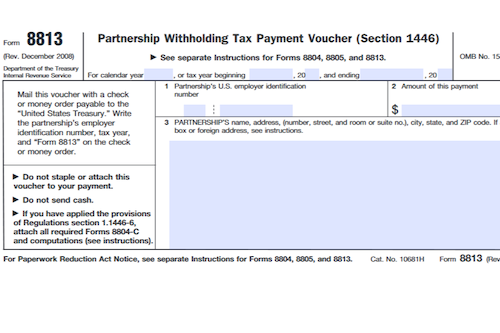Form 706 is an Internal Revenue Service form used by an executor of a decedent’s estate to calculate the estate tax and generation-skipping transfer tax owed when the estate surpasses $12.06 million in 2022 ($12.92 million in 2023). This form is required regardless of whether assets are distributed to beneficiaries.
What is Form 706?
Form 706: United States Estate (and Generation-Skipping Transfer) Tax Return is an Internal Revenue Service form used by an executor of a decedent’s estate to calculate the estate tax and generation-skipping transfer (GSTT) tax owed, in accordance with Chapters 11 and 13 of the Internal Revenue Code (IRC). This tax is levied on an entire taxable estate, not just on the specified share received by the beneficiary. Additionally, Form 706 is used to determine the overall value of the estate before assets are distributed to any beneficiaries, and the stepped-up valuation can help to minimize capital gains taxes. Form 706 must be filed for a deceased U.S citizen or resident whose gross estate, adjusted taxable gifts, and specific exemptions exceed $12.06 million in 2022. Calculating the GSTT is the responsibility of the trust’s trustee; this can be done using Form 706-GS(D).
IRS Form 706 – Who Needs to Fill It Out?
Form 706: United States Estate (and Generation-Skipping Transfer) Tax Return must be filed by the executor of the estate of every U.S. citizen or resident whose gross estate, adjusted taxable gifts, and specific exemptions total more than the exclusion amount. The exclusion amount is $12.06 million for decedents who died in 2022 ($12.92 million in 2023), or if the executor elects to transfer the “deceased spousal unused exclusion” (DSUE) amount to the surviving spouse, regardless of the size of the decedent’s gross estate. This form is used to calculate estate tax and GSTT liablity for nonresident aliens and taxes due on trusts distributions subject to GSTT.
Step-by-Step: Form 706 Instructions For Filling Out the Document
When filing Form 706: United States Estate (and Generation-Skipping Transfer) Tax Return, executors must take into account the total value of the decedent’s estate, including property, gifts, and certain exemptions. This form is used to calculate the estate tax, due according to Chapter 11 of the Internal Revenue Code (IRC), and the generation-skipping transfer tax (GSTT), imposed by Chapter 13 of the IRC. Any estate with a value above the exclusion limit—$12.06 million in 2022 ($12.92 million in 2023), or an executor who elects to transfer the deceased’s spousal exemption to a surviving spouse—must file Form 706. Furthermore, the estate includes an adjusted cost basis, as determined by the stepped-up valuation methodology, to minimize capital gains taxes. The IRS provides Form 706 and related forms (706-NA, 706-GS(D), and 706-GS(D-1)) on its website, after which they must be printed and filed at the applicable address. Form 706 must be filed within nine months of the date of death, and the taxes due must be paid within the same time frame.
Below, we present a table that will help you understand how to fill out Form 706.
| Aspect | Details |
|---|---|
| Form Name | Form 706: United States Estate (and Generation-Skipping Transfer) Tax Return |
| Purpose | Calculate estate tax (Chapter 11, IRC) and generation-skipping transfer tax (Chapter 13, IRC) |
| Inclusion Limit (2022) | $12.06 million |
| Inclusion Limit (2023) | $12.92 million |
| Filing Requirement | – Estates with a value above the exclusion limit must file Form 706 |
| – Executors can elect to transfer the deceased’s spousal exemption to a surviving spouse | |
| Adjusted Cost Basis | Determined by the stepped-up valuation methodology to minimize capital gains taxes |
| IRS Forms Available | – Form 706 |
| – Related forms: 706-NA, 706-GS(D), and 706-GS(D-1) | |
| Filing Process | – Forms can be found on the IRS website |
| – Forms must be printed and filed at the applicable address | |
| Deadline for Filing | Within nine months of the date of death |
| Deadline for Tax Payment | Taxes due must be paid within the same nine-month time frame |
Do You Need to File Form 706 Each Year?
Do You Need to File Form 706 Each Year? No, Form 706 must only be filed when the total value of a deceased U.S. citizen or resident’s gross estate, adjusted taxable gifts, and exemptions exceeds the exclusion amount, which is $12.06 million in 2022 ($12.92 million in 2023). The form must be filled out by an executor of the estate and is used to calculate the amount of tax owed to the IRS. Form 706 must always be accompanied by Form 706-GS(D) for trust distributions subject to the generation-skipping transfer tax (GSTT). The form also helps executors value an estate prior to distributing assets.
Download the official IRS Form 706 PDF
On the official IRS website, you will find a link to download Form 706: United States Estate (and Generation-Skipping Transfer) Tax Return. However, to make it easier for you, we are providing the link in our article, which comes directly from the official irs.gov website! Click to download: Form 706
Sources:
https://www.irs.gov/forms-pubs/about-form-706
https://www.irs.gov/instructions/i706




